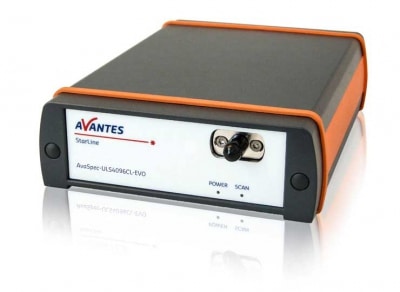Spectroradiometry is the study of electromagnetic radiation, including the visible wavelengths. Irradiance is one of the parameters that radiometry deals, it is defined as the radiant power on a surface per unit of area (usually 1m2). Irradiance measurements might be performed in the ultraviolet, the visible or in near-infrared light.
While broadband irradiance measurements are feasible with a single instrument, a more common system design includes four or more instruments configured for appropriate wavelength ranges with optimal performance achieved when the system employs dedicated instruments for the UV (200-400 nm) and NIR (1100-2500 nm) wavelength ranges.
An Avantes irradiance system employing multiple channels will connect the system spectrometers using fiber optic cable to a diffuser. This entire system then receives a special irradiance calibration against a NIST traceable irradiance source and shipped as an integrated system, and should remain integrated for the life of the system to maintain the integrity of the calibration.
Radiometry and Irradiance Measurement Applications
There are several common applications for irradiance measurements ranging from the characterization of pulsed solar simulator light sources that might be used in the solar power industry to free-space measurements of radiant sources such as street lights and lights in greenhouses.
Solar irradiance measurements characterize sunlight, defined as the totality of the magnetic spectrum emitted by the sun. Solar irradiance measurements are used in climate research and meteorology, material sciences, and in solar collection and renewable energy, and even in astronomy. During the Total solar eclipse that traversed North America in 2017, researchers from the National Center for Atmospheric Research (NCAR) and the High Altitude Observatory (HAO) paired Avantes spectrometers with powerful telescopes to capture amazing high-resolution spectra of the sun’s corona.
 My Cart
My Cart 

